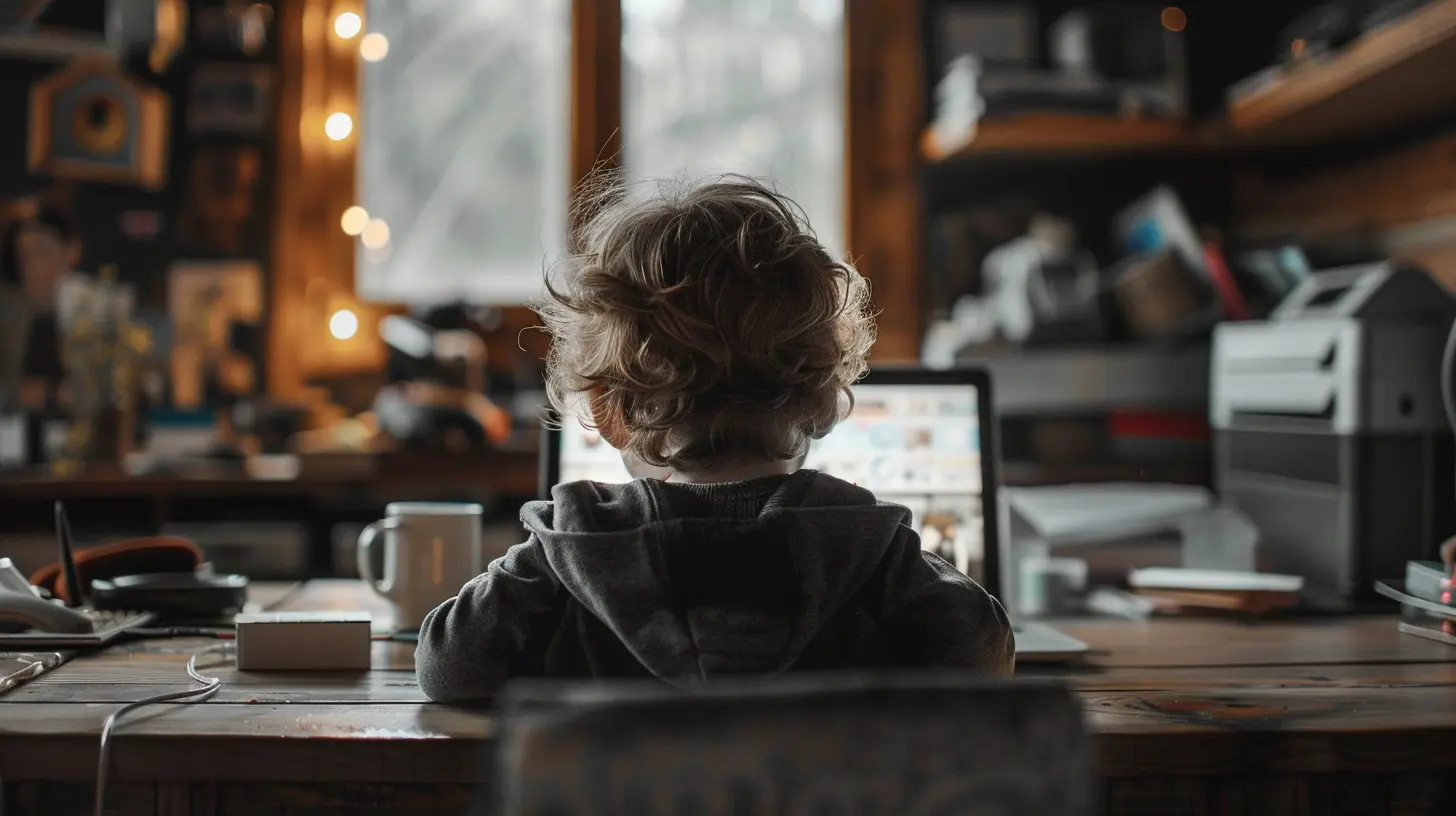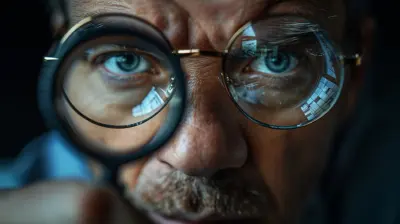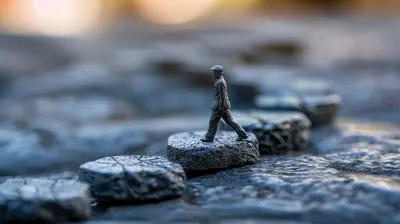The Evolution of Remote Job Interviews: What to Expect
8 May 2025
The job interview process has come a long way from the days of wearing your "best suit" and awkwardly waiting in a lobby while nervously clutching your résumé. Over the last decade, the rise of technology—and most notably, the massive shift triggered by the global pandemic—has completely shaken up how companies and candidates connect. One standout transformation? The evolution of remote job interviews.
Today, remote interviews are more than just a quick fix; they’ve become the new normal. If you’re wondering what’s changed and what’s ahead, let’s dive into the fascinating journey of remote job interviews and what you can expect moving forward.
The Early Days of Remote Job Interviews
Let’s rewind to a time before remote interviews became mainstream. Back then, they were typically reserved for special circumstances. Maybe a candidate lived in another city or country and couldn't make it to the office, or perhaps an executive with a packed schedule needed a quick solution. Whatever the case, remote interviews were rare and often limited to a simple phone call.Phone interviews were functional but lacked the personal touch. Sure, you could hear someone's voice, but things like body language, facial expressions, or even eye contact? Completely off the table. It was a bit like trying to watch a movie with half the screen missing.
As technology advanced, companies slowly began experimenting with video conferencing. Platforms like Skype (remember Skype?) became a preferred choice for those one-on-one remote interviews. Yet, the process was often clunky, plagued by technical glitches, and, let’s be honest—Skype lagged, quite literally.
The Turning Point: Pandemic-Induced Evolution
Fast forward to 2020, and the pandemic changed everything. Suddenly, remote work wasn’t a "nice-to-have" option for companies—it was a necessity. Job interviews quickly adapted to fit this new reality. Enter the era of Zoom, Microsoft Teams, and Google Meet.Virtual interviews became the standard across almost every industry. Employers and job seekers alike had to pivot fast. And while many expected this shift to be temporary, remote interviews proved to be more efficient, flexible, and cost-effective than their in-person counterparts.
Think about it: no more nervous commutes to a new office, no more juggling flight schedules for out-of-town interviews, and no more geographical limitations in the hiring process. Companies could suddenly connect with talents from across the globe without blinking an eye.
Remote interviews didn’t just replace traditional methods—they transformed them for good.
What Makes Remote Interviews Unique
So, what’s unique about remote interviews compared to the old-fashioned way of doing things? Well, for starters, they’re way more accessible. But that’s not all. Here are some major factors that set them apart:1. Technology Takes Center Stage
If you’ve ever been on a remote interview, you know the tech setup can make or break the experience. Stable internet? Check. Good lighting? Double-check. A decent webcam and clear audio? You better believe it.In a traditional interview, showing up on time and looking polished were enough to make a good impression. But in a remote interview, your tech skills are almost like the new handshake. Can you navigate the virtual meeting platform seamlessly? Do you know how to troubleshoot if something goes wrong? These little details matter—a lot.
2. Environment = First Impressions
Your environment plays a big role in shaping how you appear to the interviewer. A clutter-free, well-lit background can show you’re organized and professional. On the flip side, a messy space, barking dogs, or screaming children in the background? Let’s just say it might send the wrong message.While in-person interviews gave employers a sneak peek into how you might behave in a professional setting, remote interviews put the spotlight on your ability to create a controlled, distraction-free environment from wherever you are.
3. Non-Verbal Communication Shifts
Ever notice how much harder it is to read someone over a video call? Body language and facial expressions translate differently on screen. That means you’ve got to be extra mindful of things like maintaining eye contact (hint: look at the camera, not the screen) and smiling occasionally to show engagement.At the same time, interviewers have adapted too. They’ve learned to focus on tone of voice and the content of what you’re saying rather than relying solely on non-verbal cues.
What to Expect in the Future of Remote Job Interviews
Alright, so we’ve established where we’ve been and where we are now. But what’s next? What does the future of remote job interviews look like? Spoiler alert: it’s only going to get more tech-savvy and innovative.1. AI-Powered Interview Tools
Artificial Intelligence (AI) is on the rise, and it’s already making waves in the hiring process. Picture this: an AI bot analyzes your video responses and rates you on things like confidence, tone, and even the complexity of your answers. Sounds a bit like sci-fi, right? But tools like this are already being tested by some companies.While this might sound intimidating, the upside is that AI could help reduce unconscious biases in hiring. Instead of judging candidates on superficial factors, decisions could become more data-driven and fair.
2. Immersive Virtual Reality (VR) Interviews
Imagine putting on a VR headset and sitting in a virtual conference room with your interviewer. Sounds far-fetched? It’s closer than you think. With the rise of the metaverse and advances in VR technology, companies may start conducting interviews in virtual environments that replicate real-world office settings.This could help bridge the gap between remote and in-person interviews while also creating new opportunities for creativity and innovation in the hiring process.
3. Hybrid Interview Models
While remote interviews are here to stay, that doesn’t mean in-person interviews will disappear entirely. The future might lie in hybrid models where initial rounds are conducted remotely, and final rounds happen face-to-face (especially for higher-level positions). This approach combines the efficiency of remote interviews with the personal touch of in-person meetings.Tips to Nail Your Next Remote Interview
Now that you know what to expect, how can you put your best foot forward? Here are some quick tips to ace your next remote interview:- Test Your Tech: Double-check your internet connection, microphone, and camera before the call. Speaking of cameras—clean that lens!
- Dress the Part: Yes, even if it’s remote, wear professional attire. No one needs to know you’re rocking sweatpants below the frame.
- Choose the Right Background: A plain, clutter-free wall works best. Bonus points if you add a touch of personality, like a plant or bookshelf.
- Practice Makes Perfect: Hop on a mock video call with a friend to practice answering questions and getting comfortable on camera.
- Stay Calm Under Pressure: Technical glitches happen. If something goes wrong, don’t panic—address it calmly and move on.
Wrapping It Up
Remote job interviews aren’t just a passing trend—they’re the future of hiring. From better accessibility to cutting-edge tech like AI and VR, the landscape of job interviews is evolving faster than ever. While it might feel a bit overwhelming at first, remember: it’s a shift that ultimately empowers both candidates and companies.So, as you prep for your next remote interview, embrace the change. After all, what better way to show you’re adaptable than by thriving in this modern, tech-driven approach to hiring?
all images in this post were generated using AI tools
Category:
Remote WorkAuthor:

Rosa Gilbert
Discussion
rate this article
3 comments
Madison McClain
This article highlights the rapid transformation of remote job interviews, emphasizing the need for candidates to adapt. Embrace technology, prepare for virtual assessments, and showcase your skills effectively to stand out in this evolving landscape.
May 16, 2025 at 4:40 AM

Rosa Gilbert
Thank you for your insights! Indeed, adapting to new technologies and honing our presentation skills are crucial for success in virtual interviews.
Zailyn Garcia
Remote interviews streamline hiring efficiency significantly.
May 10, 2025 at 8:21 PM

Rosa Gilbert
Absolutely, remote interviews enhance efficiency by saving time and resources for both employers and candidates, making the hiring process smoother and more accessible.
Jax McTier
The evolution of remote job interviews reflects the rapid adaptation of technology and changing workplace dynamics. Candidates must now showcase not only their skills but also their adaptability and digital fluency. Future interviews will prioritize authentic engagement, ensuring a seamless blend of professionalism and personal connection.
May 10, 2025 at 4:42 AM

Rosa Gilbert
Thank you for your insightful comment! Indeed, the shift towards remote interviews emphasizes the importance of adaptability and authenticity, shaping the future of hiring in our increasingly digital world.



